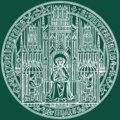At the German Cancer Research Center (DKFZ), quantum coherence and nuclear spin play a key role in experiments which explore the dynamics and interaction of biomolecules of low mass in living tissue. Here, collective hydrogenic dipole-dipole interactions are employed in measuring the microscopic structure with liquid nuclear magnetic resonance. The underlying phenomenon is the so-called intermolecular multiple-quantum coherence, i.e. a collective phenomenon of the interacting spins to be understood only within a fully quantum-mechanical picture. As a support of complex biological and medical experiments, various quantum calculations are to be carried out at the DKFZ and the Max Planck Institute for Medical Research (MPImF). Quantum chemical computations are employed to understand the absorption of light for retinal proteins, and with this, the isomerization of the chromophore. Simulations of the whole protein are envisaged using quantum molecular mechanics. We aim to provide structural information on intermediates in the photocycle and to provide a detailed picture of the complex retinal photoreaction. Furthermore, various quantum models are to be developed to study blue light photo sensors, hemi-thiolate and nucleotide binding enzymes. Particular interest will be placed on revealing the underlying mechanisms.






